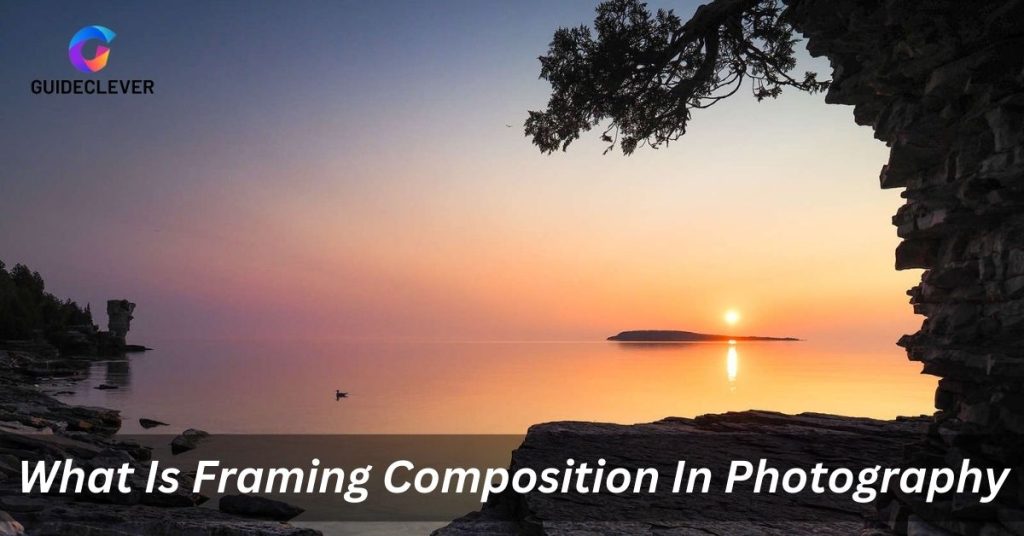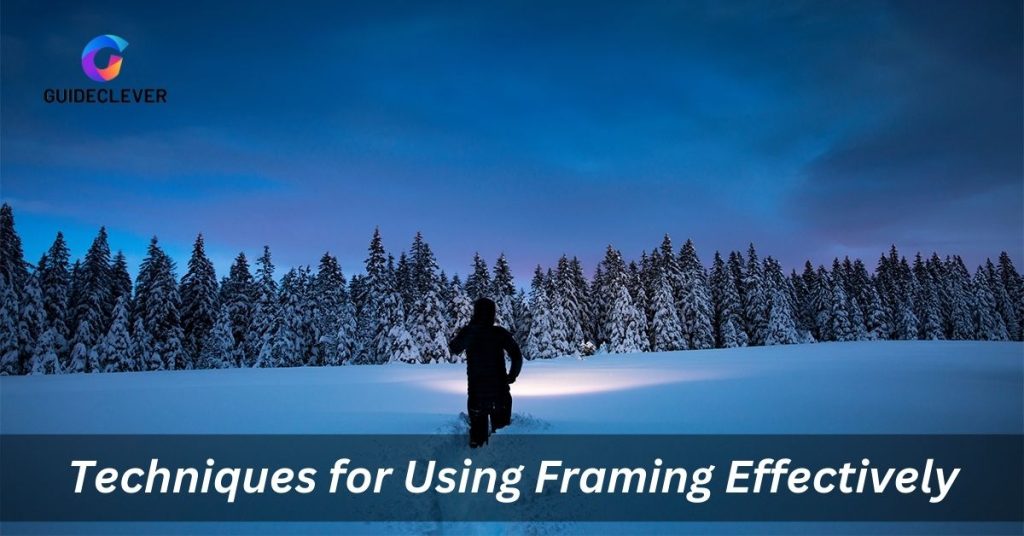Framing in-camera composition is an essential skill for any photographer. It is the practice of utilizing things in your photograph to enhance. The central theme is brought to light through the aesthetic appeal. Framing can involve using lines, forms, colors, or even depth of field to enhance the attention and charm of a photograph. With a bit of experimentation and practice. You can learn to use framing and take your photos to the next level. In this guide, we will discuss how to use framing in-camera composition. The various methods you can use to produce beautiful images.
Contents
What is Framing?

Framing is using lines, shapes, and elements in a photograph to draw attention to the main subject. It can be used to draw attention to the main issue or, in some other way, stress it. Framing can enhance a photo by adding depth and perspective. It creates an organized, balanced composition and helps to tell a story.
How Do You Use Framing In Photography?
When framing an image, look for existing lines and forms in the scene. These can be natural elements such as trees or artificial fences or walls. Look for bars that draw your eye toward the main subject and create a frame around it. You can also use colors to emphasize the main issue. Remember to use depth of field to keep the focus on the main subject and blur out elements that detract from it.
When using framing in-camera composition, remember the Rule of Thirds. The Rule of Thirds is a fundamental principle of photography. Explains how to divide an image into nine equal sections. with the subject in one of the four intersections.
What Is Framing Composition In Photography?

Framing composition in photography uses lines, shapes, and elements to draw attention to the main subject. Framing can create balance and emphasize a scene or add depth and perspective. It provides an organized look that helps tell a story. The Rule of Thirds is often used in framing compositions. It helps keep the main subject in focus and draw attention to it.
By utilizing framing, you can create stunning photographs with more impact. Take some time to practice and experiment with different frame types and see how your images change. With a bit of practice, you’ll soon be able to use this technique to take your photos to the next level.
Types of Framing
Traditional Frames (doors, windows, arches)
Traditional frames such as doors, windows, and arches are among them. The most popular types of framing in photography. They give photographs structure and a sense of depth and perspective. Utilizing traditional frames can draw attention to the main subject. By providing a sharp contrast between the frame and the background. They can also provide visual interest and texture to a scene. Doors, windows, and arches are all great frames for leading the viewer’s eye to the main subject. Additionally, they can help to differentiate between many subject elements as well. Traditional boundaries are versatile and are often used in landscape and still-life photography. They offer a great way to elevate the composition of any photograph.
Natural Frames (trees, foliage, rocks)
Natural frames are another popular type of framing in photography. They include trees, foliage, rocks, and other natural elements. Natural frames add a sense of depth and perspective to the image. They can also provide texture and color contrast. Making them great for highlighting the main subject in your scene. Additionally, they can give your photographs a feeling of scale and proportion. Natural frames offer an organic look. It makes a location appear more natural and inviting. They are often used in landscape and nature photography.
Human-Made Frames (buildings, fences, tunnels)
Human-made frames are another framing popular in photography. They include buildings, fences, tunnels, and other artificial objects. Human-made frames are great for leading the viewer’s eye to the main subject. They can provide structure and balance in an image and create depth and perspective. Human-made frames can emphasize a matter or provide context for it. They are often used in urban and architectural photography.
Framing With Foreground Elements (objects, people)
Foreground elements such as people or objects can also frame a scene. When using foreground elements, remember to use depth of field to keep the focus on the main subject. Foreground elements can lead the viewer’s eye to the main subject or provide context. They are great for emphasizing the main subject and adding visual interest to a scene. Foreground elements can be used in any photography. But are often used in landscape and street photography.
Framing With Light and Shadows (backlight, sidelight)
Light and shadows can also be used to frame a scene. Backlight and sidelight are two of the most popular types of light used in photography. They may be employed to draw attention to the main idea.
Add depth and perspective,
And provide texture and color contrast.
Backlight and sidelight are often used in portraiture,
Landscape,
and still-life photography.
Techniques for Using Framing Effectively

Selecting the Subject
When setting up a framing composition. It’s essential to start by selecting the subject. This will help you determine which elements to use for framing and how they should be arranged. Try to choose a subject that will stand out and draw the viewer’s eye.
Compositional Balance
When framing an image, strive to create balance. The lines and elements should be arranged to create harmony and unity. Make sure the primary subject is seen. All factors contribute to the composition.
Emphasizing Depth and Perspective
Framing can be used to add depth and perspective to a scene. Look for lines that draw the viewer’s eye toward the main subject and use depth of field to keep it in focus. You can also use colors and tones to emphasize the main subject and create a frame around it.
Framing for Context
Framing can also be used to provide context for the main subject. Look for elements that will add depth and perspective to the image. But it won’t compete with the main subject. This will help draw attention to it and create a more interesting composition.
Directing Attention
Strive to direct the viewer’s attention to the main subject. Make sure that all elements lead the eye toward it. No other elements are competing for attention. This will help keep the focus on the subject and create a more powerful composition.
Tips For Using Framing Effectively
01. Start by selecting the main subject and then work on framing it.
02. Look for lines that draw attention to the main subject.
03. Use colors and tones to emphasize the main subject.
04. Create balance by arranging elements harmoniously.
05. Use depth of field to keep the main subject in focus.
06. Provide context by adding elements that won’t compete with the main subject.
07. Frame the scene to direct attention to the main subject.
08. Try out various frame options and perspectives to see what works best.
09. Make sure the frame doesn’t overpower the main subject and distract from it.
10. Pay attention to shadows and highlights when framing a scene.
Using frames, photographers can add structure and visual interest to their photos. They can create balance and emphasize depth and perspective. They focus attention on the primary subject. Whether using traditional frames, natural frames, human-made frames, or light and shadows. There are many ways to use framing effectively. Experiment with different types and angles to find what works best for your image. You’ll be able to create stunning photos that feature beautiful frames.
Final Thought
Framing can be a powerful tool to enhance the composition of any image. By incorporating traditional frames,
Natural frames,
Human-made frames,
Foreground elements, and light and shadows into your scene. You can add depth and perspective to your shots while emphasizing the main subject.
With practice and experimentation. You can create eye-catching images that stand out from the rest. So get out there and start framing!



1 thought on “How To Use Framing In-Camera Composition – Framing Your Vision”